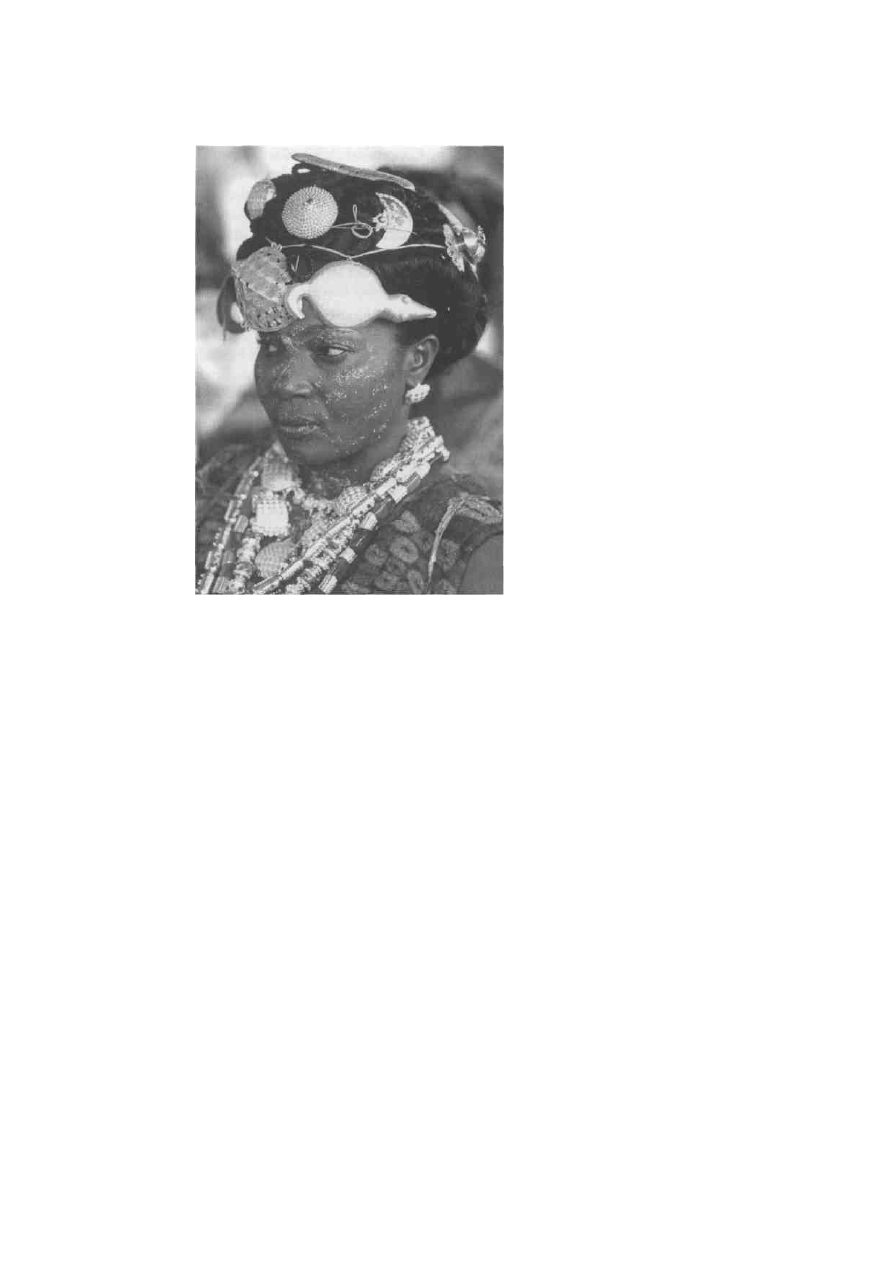
4
content analysis
counting what you (think you) see
key example a book by Catherine Lutz and Jane Collins which analyses
nearly 600 of the photographs published in the magazine National Geographic
between 1950 and 1986.
1 content analysis: an introduction
This chapter discusses a method of analysing visual images that was originally
developed to interpret written and spoken texts: content analysis. In one way,
content analysis stands in sharp contrast to the method examined in the previous
chapter. Whereas compositional interpretation is methodologically silent,
relying instead on that elusive thing called 'the good eye', content analysis is
methodologically explicit. Indeed, it is based on a number of rules and
procedures that must be rigorously followed for the analysis of images or texts
to be reliable (on its terms). Don Slater puts the contrast between these two
methods into the broader context of social science and humanities research
more generally. Speaking of the post-Second World War period, he says:
The main line of development in (particularly Anglo-Saxon) social science
was structured by the ideals of quantification and natural science methodol-
ogy. In this context, social research which relied on cultural meanings as
data was seen as shaky and subjective, incapable of rigorous control.
Moreover, whereas interpretive, qualitative approaches to social action
secured footholds in social science, cultural texts seemed to belong in the
domain of literary or art criticism, which were irredeemably woolly and had
more to do with refined 'cultural appreciation' than with any tradition of
sustained analysis and investigation. (Slater 1998: 233-4)
Whereas what I have called 'compositional interpretation' would have been
seen as one version of 'refined cultural appreciation', content analysis was
concerned to analyse cultural texts in accordance with 'the ideals of
quantification and natural science methodology'. It was first developed in the

60
visual methodologies
interwar period by social scientists wanting to measure the 'accuracy' of the new
mass media, and was given a further boost during the Second World War, when
its methods were elaborated in order to detect implicit messages from German
domestic radio broadcasts (Krippendorf 1980). Hence its explicit methodology,
through which, it was claimed, analysis would not be woolly but would be
rigorous, reliable and objective.
Some discussions of content analysis argue that its definition of 'reliable'
equates reliability with quantitative methods of analysis (Ball and Smith 1992;
Neuendorf 2002; Slater 1998). However, as Krippendorf (1980) makes clear in
his discussion of content analysis, content analysis also involves various
qualitative procedures (see also Weber 1990). Instead of focusing on the
question of quantification, Krippendorf's definition of content analysis
emphasizes two different aspects of what might be called 'natural science
methodology': replicability and validity (these terms will be defined in sections
2.2 and 2.3 of this chapter respectively). 'Content analysis', he says, 'is a
research technique for making replicable and valid inferences from data to their
context' (Krippendorf 1980: 21). In line with the broad approach to visual
images outlined in Chapter 1, he insists that content analysis is a way of
understanding the symbolic qualities of texts, by which he means the way that
elements of a text always refer to the wider cultural context of which they are a
part. Content analysis aims to analyse those references in any one group of texts
in a replicable and valid manner.
Nonetheless, studies using content analysis do tend to use lots of numbers
to make their points. This is because, in its concern for replicability and validity,
content analysis offers a number of techniques for handling large numbers of
images with some degree of consistency. In their study of nearly 600 of the
photographs used in the magazine National Geographic over nearly three
decades, for example, Catherine Lutz and Jane Collins decided to use content
analysis for just this reason. Their defence of content analysis suggests that
content analysis can be useful for the visual critical methodology outlined in
Chapter 1 of this book:
Although at first blush it might appear counterproductive to reduce the rich
material in any photograph to a small number of codes, quantification does
not preclude or substitute for qualitative analysis of the pictures. It does
allow, however, discovery of patterns that are too subtle to be visible on
casual inspection and protection against an unconscious search through the
magazine for only those which confirm one's initial sense of what the
photos say or do. (Lutz and Collins 1993: 89)
This passage is worth expanding on. First, like Krippendorf, these authors
are insisting that content analysis can include qualitative interpretation. Content
analysis and qualitative methods are not mutually exclusive. Secondly, Lutz and
Collins are suggesting that content analysis can reveal empirical results that
might otherwise be overwhelmed by the sheer bulk of material under

content analysis
61
analysis, and their own study seems to provide evidence for this. And finally,
they suggest that content analysis prevents a certain sort of 'bias'. Clearly they
are not referring to the sort of bias that worried some of the early proponents of
content analysis; they are not concerned that their work is subjective, 'woolly' or
informed by social theory, for example. Rather, like Christopher Pinney (2003),
working in a very different tradition (see Chapter 10), they are concerned to
avoid searching through photographs in order only to confirm what they think
they already know about the photos. They are suggesting that this danger can be
avoided by using the rules of content analysis, which force a researcher to be
methodologically explicit rather than rely unknowingly on 'unconscious'
strategies. Being so up-front about your research procedures is a sort of
reflexive research strategy, then. Lutz and Collins's argument thus coincides at
this point with the third criterion for a critical visual methodology that Chapter
1 outlined: the need to be as methodologically explicit as possible in order to
make your own way of seeing as evident as possible. This chapter will assess
the efficacy of content analysis as part of a critical visual methodology by using
Lutz and Collins's (1993) book as its case study of a content analysis.
Content analysis would also appear to have some disadvantages in relation
to visual images, however. There are aspects of visual imagery which it is not
well-equipped to address. It focuses almost exclusively on the compositional
modality of the site of the image itself. It therefore has very little to say about
the production or the audiencing of images. In this sense, it is paradoxically
very much like compositional interpretation, which has little to say about those
two sites of meaning-making either. Its uninterest in audiencing feeds into its
proponents' faith in the replicability of content analysis, as we will see in
section 2.3; critics like Michael Ball and Gregory Smith (1992) and Don Slater
(1998) suggest that the different ways different people interpret the same text
has to be ignored if replicability is to be achieved. Finally, some of its critics
also argue that content analysis cannot satisfactorily deal with the
mil Sp'lflCance Oí images either. Tin's latter criticism, k seems to me,
depends on how successfully the links between the content of the images
undergoing content analysis and their broader cultural context are made. If :hose
links are tenuous, then this final criticism is valid. This chapter examines content
analysis by:
. exploring its claims to replicability and validity;
► describing its procedural rules;
. assessing the usefulness of the kinds of evidence it produces, using the criteria
for a critical visual methodology outlined in Chapter 1.
2 four steps to content analysis
The method of content analysis is based on counting the frequency of certain
visual elements in a clearly defined sample of images, and then analysing

62
visual methodologies
those frequencies. Each aspect of this process has certain requirements in order
to achieve replicable and valid results.
2.1 finding your images
As with any other method, the images chosen for a content analysis must be
appropriate to the question being asked. Lutz and Collins describe their research
question thus:
Our interest was, and is, in the making and consuming of images of the
non-Western world, a topic raising volatile issues of power, race, and history.
We wanted to know what popular education tells Americans about who
'non-Westerners' are, what they want, and what our relationship is to them.
(Lutz and Collins 1993: xii)
Given that research question, they then explain why they chose National
Geographic as an appropriate source of images:
After much consideration, we turned to the examination of National
Geographic photographs as one of the most culturally valued and potent
media vehicles shaping American understandings of, and responses to, the
world outside the United States. (Lutz and Collins 1993: xii)
They point out that National Geographic is the third most popular magazine
subscribed to in the USA, and that each issue is read by an estimated 37 million
people worldwide, and that in its reliance on photography it reflects the
importance of the visual construction of social difference for contemporary
Western societies.
Unlike many other of the methods this book will discuss, however, content
analysis places further strictures on the use of images. To begin with, content
analysis must address all the images relevant to the research question. This
raises questions for content analysts about the representativeness of the
available data. If, for example, you are interested in tracing the increasing
acceptability of facial hair on bourgeois men in the nineteenth century, you may
decide that the most appropriate source of images for assessing this
acceptability are the popular magazines that those men would have been
reading. If, however, you find that a twenty-year run of the best-selling of those
magazines is missing from the archive you have access to, you face a serious
problem in using content analysis: your analysis cannot be representative since
your set of relevant images is incomplete.
Ensuring that the images you use are representative does not necessarily
entail examining every single relevant image, however. Almost all content
analyses rely on some sort of sampling procedure. This is because most content
analyses work with large datasets; this chapter has already noted that this is one
of the strengths of content analysis. Sampling in content analysis is subject to
the same concerns it would be in any quantitative study. It should

content analysis
63
Figure 4.1
'Adioukrou
Woman', an
image from
National
Geographic
magazine
be both representative and significant. There are a number of sampling strate-
gies described in Krippendorf (1980) and Weber (1990). They include:
• random. Number each image from 1 onwards, and use a random number
table to pick out a significant number of images to analyse.
• stratified. Sample from subgroups that already exist in the dataset, choosing
your image from within each subgroup again using a clear sampling strategy.
• systematic. Select every third or tenth or nth image. Be careful that the
interval you are using between images does not coincide with a cyclical
pattern in your source material, otherwise your sample will not be repre-
sentative. For example, in a study of weekday newspaper advertisements,
choosing every sixth paper might mean that every paper in your sample
contains the weekly motoring page, which might mean that your sample will
contain a disproportionate number of adverts for cars.
• cluster. Choose groups at random and sample from them only.
Which sampling method you choose - or which combination of methods -will
depend on the implications of your research question. If you wanted to sample
the full range of TV programmes in order to explore how often people with
disabilities were given airtime, you might use a stratified sampling
Wyszukiwarka
Podobne podstrony:
visual methodologies chapter4 content analysis pages 1 5
visual methodolgies chapter 1 the rest
visual methodolgies chapter 1 the rest
A Content Analysis of Magazine?vertisements from the United States and the Arab World
Selected Methods Chapter37
Cinlar E , Vanderbei R Mathematical Methods of Engineering Analysis
Steve Stemler An Overview of Content Analysis
Hall, C S , Van de Castle, R L (1966) The content analysis of dreams r 13 Reliability of scoring, s
Paul Levine The Midas Method Of Technical Analysis
Lab 2 Visual Analyser oraz kompresje v2
Strategic analysis methods
Lab 2 Visual Analyser oraz kompresje v2
Lab 2 Visual Analyser oraz kompresje v2
Malware Detection using Statistical Analysis of Byte Level File Content
Analysis of shear wall structures of variable thickness using continuous connection method
an eternam now an analysis of temporality of computer games Content File PDF
Analysing Popular Music Theory, Method And Practice By Phi
Gee; An Introduction to Discourse Analysis Theory and Method
więcej podobnych podstron